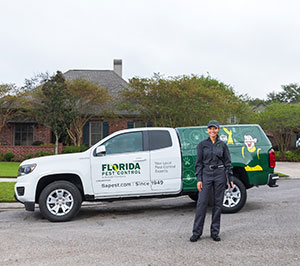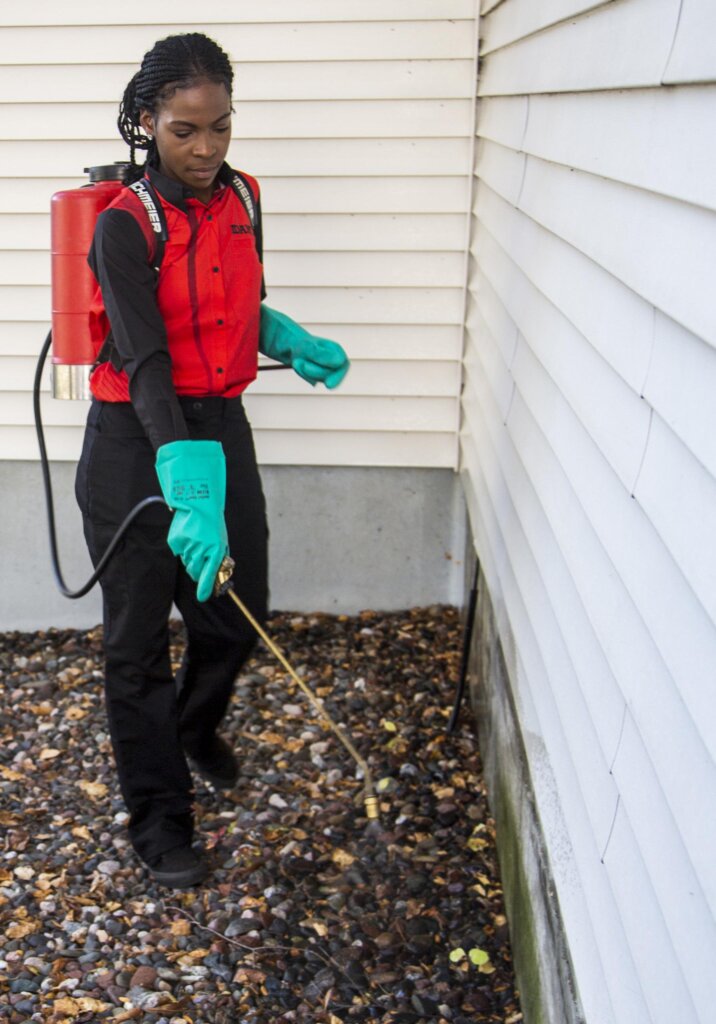Effective Pest Control Services: An In-Depth Take A Look At Elimination Techniques and Prevention Measures
In the world of parasite control solutions, the effective administration of invasions requires a precise method that integrates different strategies and procedures for both obliteration and avoidance. From Integrated Bug Management (IPM) approaches that prioritize sustainable remedies to chemical elimination techniques developed for targeted removal, the collection versus insects is huge and multifaceted. Organic control approaches and physical avoidance actions supply different courses to efficiently combating undesirable trespassers. Nonetheless, the secret to an extensive pest control strategy lies not simply in the methods themselves, but also in the careful specialist evaluation procedures that precede and inform them. By understanding the ins and outs of each approach and just how they interplay, one can truly realize the complexity and performance of modern bug control services.

Integrated Parasite Administration (IPM) Methods
Integrated Bug Management (IPM) Techniques encompass a detailed technique to pest control that focuses on prevention, tracking, and control methods to properly handle parasite populaces. By incorporating various methods, IPM intends to lessen the effect of bugs while likewise lowering the reliance on chemical pesticides. Prevention exists at the core of IPM, stressing techniques like appropriate hygiene, upkeep of hygiene, and sealing access indicate hinder parasites from infesting buildings. Tracking plays a crucial function in IPM by routinely recognizing and checking insect levels to determine the appropriate treatment limits. Control approaches in IPM focus on making use of physical, organic, and social strategies before turning to chemical treatments as a last option. These techniques consist of presenting natural killers, environment alteration, and using trapping tools to maintain bug populations in check. In general, IPM promotes a ecologically mindful and lasting strategy to pest monitoring, advertising lasting remedies that guard both human health and the community.
Chemical Elimination Techniques
Chemical elimination techniques are generally employed in parasite control services to successfully get rid of bug populations that present a risk to human health and property. These techniques involve the use of numerous chemical compounds specifically designed to target and remove insects such as pests, rodents, and various other unwanted animals. The application of chemicals, insecticides, rodenticides, and various other chemical agents is very carefully controlled to guarantee optimum performance while minimizing dangers to human beings, animals, and the setting.
One of the key benefits of chemical extermination methods is their capability to supply fast and targeted outcomes, making them particularly beneficial in situations of extreme problems or immediate pest control demands - a1 portland bed bug exterminator. However, it is necessary to stress the importance of company website proper handling, application, and disposal of these chemical products to avoid unplanned injury
Furthermore, integrated pest administration (IPM) techniques usually combine chemical extermination methods with various other approaches such as cleanliness, environment modification, and biological controls to develop a lasting and extensive insect control approach. By including chemical extermination strategies deliberately within an IPM framework, parasite control solutions can properly handle insect populaces while minimizing potential dangers to human wellness and the environment.
Organic Pest Control Methods
Utilizing all-natural predators and parasites to manage parasite populations is a lasting approach called organic parasite control. This approach harnesses the all-natural mechanisms of the environment to manage pest populations without depending on synthetic chemicals. One typical organic control approach entails introducing natural enemies of the target bug types, such as ladybugs for aphid control or nematodes for termite problems. These natural killers feed upon the insects, aiding to maintain their populaces in check.
One more reliable biological control technique is making use of microbial insecticides. These are normally occurring bacteria, such as viruses, germs, and fungis, that specifically target and contaminate specific pest varieties. By using these microbial representatives, parasite populations can be properly reduced without damaging useful microorganisms or creating harm to the environment.
Physical Insect Prevention Steps
Carrying out physical pest avoidance steps involves making use of barriers and structural modifications to hinder insects from infesting a property or going into. Mounting door sweeps, displays on windows, and sealing cracks in the foundation can aid stop insects like pests and rodents from obtaining gain access to indoors.
One more physical prevention procedure is the use of obstacles like fencing to maintain larger pests such as deer or raccoons away from the building. By applying these physical bug prevention steps, building proprietors can substantially reduce the risk of parasite infestations and the damage they can create.
Professional Parasite Evaluation Treatments
Conducting thorough and systematic parasite inspections is an essential element of expert pest management procedures. Expert bug assessors are trained to carefully take a look at homes for indicators of infestations, determining pest varieties, entrance points, and conducive problems.

Conclusion
In verdict, efficient bug control services utilize a selection of strategies, including Integrated Pest Management strategies, chemical extermination approaches, biological controls, and physical avoidance procedures. Professional insect inspection treatments play an important duty in identifying and dealing with pest issues in a prompt fashion. By carrying out a combination of these methods, home owners can successfully avoid and take care of bug invasions.
From Integrated Insect Administration (IPM) methods that focus on lasting services to chemical extermination techniques designed for targeted removal, the collection versus bugs is huge and diverse.Integrated Insect Management (IPM) Strategies encompass an check out this site extensive method to pest control that concentrates on control, surveillance, and avoidance methods to efficiently manage parasite populaces.Chemical extermination methods are typically employed in pest control services to effectively eliminate insect populations that position a risk to human health and wellness and property.Using all-natural killers and bloodsuckers to manage insect populations is a sustainable technique understood as organic insect control.In final thought, reliable bug control solutions utilize a range of techniques, including Integrated Insect Administration techniques, chemical elimination approaches, organic controls, and physical prevention procedures.